Hair braiding is a very common practice in the African American community. It’s used to achieve various looks, from simple cornrows to complex styles that resemble trees and animals. Hair braiding has always been a part of African culture, but it was banned for a time in some schools as being un-Christian.
In fact, hair braiding is deeply rooted in both Christianity and various African religions – one legend says that ancient Egyptian queens would have their daughters braid their hair as infants so they would not become distracted by playing with it as they grew older.
In the United States, hair braiding has been a part of African American culture for centuries. In fact, many white women would have their black maids braid their hair in order to save time. However, around the turn of the century, it started becoming popular with all women – and men too! You can see evidence of this when you look at old photographs from this era – many people had intricate braids wrapped around their heads to create complex styles that resemble crowns or jewels.
African hair braiding is the ideal solution for women who want to wear an elegant updo or bun while still having their own hair in a protective style. It’s also great for any woman who has short or medium length natural hair, but long braids are extremely popular nowadays too.
Let’s examine the basic braiding styles that are used to create simple everyday styles. You may think you know how to braid hair. Still, once you begin looking at the different styles, it becomes obvious that few people actually understand all of them. First off, there is…
Cornrows
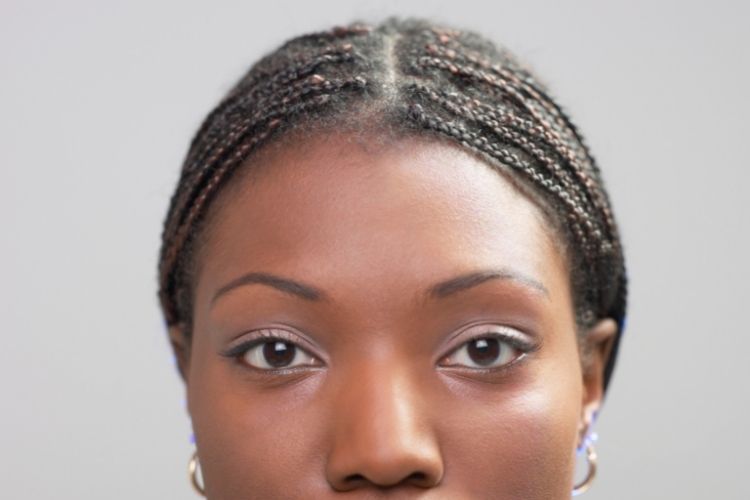
Cornrows are the most common style of braiding in the African American community. In fact, it is so common that if you ask someone to braid your hair, they will probably give you a cornrow style. Braided styles can be seen all over Africa and even in modern-day Somali culture – but there is a difference between how this hairstyle appears on people with naturally straight hair versus those who have tightly curled hair.
You may have heard that cornrows appear to be easiest for those who have straight hair, but this isn’t necessarily true for everyone! Cornrows work best on very tight, curly, or coarse hair. The reason why is because as long as your natural texture is as close as possible to the texture of the braid, it will look neater. If your hair is naturally coarse, then cornrows are an excellent option because they give the appearance of having very tight curls – which isn’t difficult to do with braiding.
More: SOFT LOCS GUIDE
One common myth about cornrows is that it’s easier for them to get messy or tangled when worn in certain styles. This simply isn’t true! Cornrows can be styled into a variety of different looks that will create neat and fashionable appearances even if you have 4c hair.
They also work well when twisted into two-strand twists, especially for women who have long natural hairstyles. The main reason why this style works so well is that it actually makes your hair grow much faster when kept in for longer periods of time! If you are fond of two-strand twists, then cornrows are simply the best style you can work with to achieve this look.
Micro braids
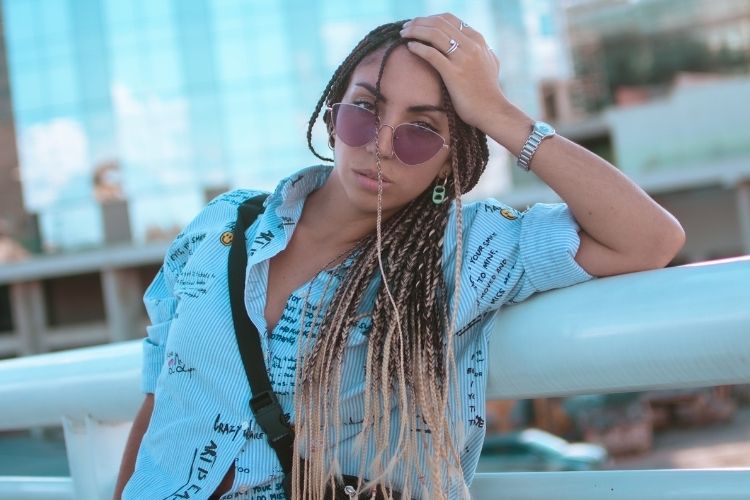
The next basic style is micro braids, which are very popular for black women. The only difference between these two styles is that micro braids are much smaller in size and require less time to finish. This means you can keep them done longer – sometimes up to a year, depending on the style!
Micro braids look best when they are kept neat and free from tangles, so it’s best to have your hairdresser use a sealant before you leave the shop. This helps protect them from dirt and moisture – two things that micro braids need to be kept looking good.
Tree Braids
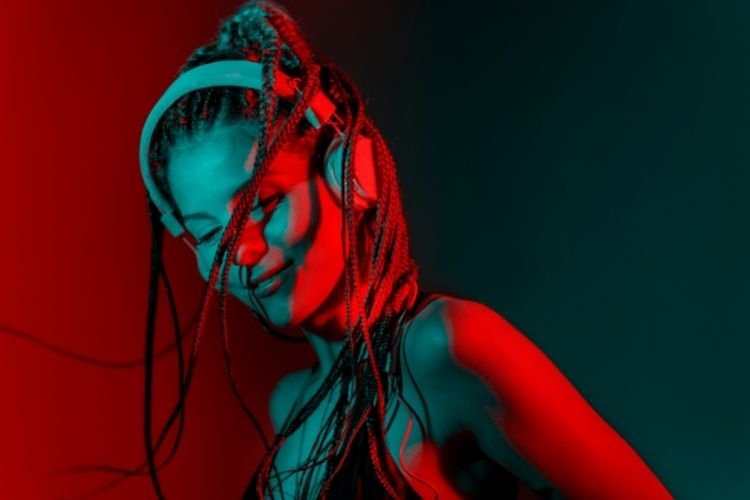
Tree braids are named after the way the sections of hair look – like a tree’s branches. This style of braiding is done in one layer of small cornrows across the top, with three individual strands of hair worked into each section. The results are neat and tidy sections that resemble puffy pigtails when completed. For this reason, tree braids work best for very short natural haircuts.
It’s also important to note that you should always use two colors when getting this style; give preference to darker colors if your hair is dark or light colors if your hair is light (or grey). This creates an interesting contrast that makes them appear more like locks on some individuals.
Box braids

The African box braids style is very similar to tree braids, except that it has more sections and uses three strands of hair rather than one. This means there are locks on all sides of your head, making them stand out, even more when you style them in different ways. There are several options available with box braids, which is what makes it so versatile. You can have them done the traditional way to the flair braids, where you stack several flat braids together in a wave-like pattern.
Faux Locs
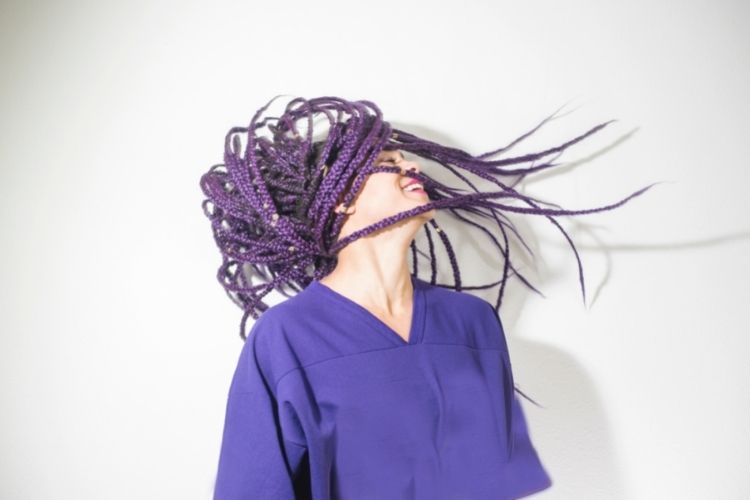
Faux locs are also known as two-strand twists. The difference between this style and other box braids styles is that faux locs actually look like mini versions of real dreadlocks! They are easy to maintain because you can keep them for months at a time with minimal effort – just apply a bit of mild shampoo and sealant when needed. Faux locks work best on long natural hairstyles.
Twists

Twists are a great way to achieve a casual hairdo for natural hair. Depending on your preference, they can be done as individuals or as large sections of cornrows. Like most braided styles, twists work best when you have them done by a professional because they require more time and skill than regular braids. When applied correctly, twists look great and give the appearance of longer locks.
Most black women agree that their natural kinky or curly hair is hard to maintain if it’s not styled into some sort of protective style. These protective looks allow you to leave your hair alone without worrying about how it looks. This means you can just comb your new growth every few weeks and let the rest grow out without having to worry about wearing it out.
More: 8 ESSENTIAL MAKE-UP MUST-HAVES FOR THE ON-THE-GO GAL!
How to Prepare Braided Styles
Before you go for braids, there are a few things you need to do to prepare for your appointment.
1. Get a Good Night’s Rest
Braids take a while to do, so you need enough rest before your appointment. This way, you will have the energy needed to relax and get through the process without being grumpy or impatient. Over-exhaustion can lead to accidents, which is why it’s important to come in rested and ready for your appointment.
2. Wash Your Hair With a Clarifying Shampoo
Because you will be wearing your braids for a long time, it’s important to cleanse the scalp as much as possible before getting them done. This means stopping by the store and picking up some sort of natural cleansing shampoo (preferably organic) that is formulated to remove residue like oil, dirt, product build-up, and other contaminants.
The last thing you want is any funky build-up during the braiding process! You can then follow this up with an apple cider vinegar rinse or even some simple baking soda paste to deep cleanse your scalp.
3. Trim Any Dead Ends on Your Hair if It Needs It
Just like when getting a haircut, it’s a good idea to get rid of any split ends before going for braids or protective styles. This will help your hair grow healthy and strong while giving your stylist a better foundation on which to start braiding.
4. Start Oiling Your Scalp at Least a Week Before
Applying natural oils to your scalp can help protect it during the process of braiding. This is because they protect against dryness and scaliness, which can be caused by chemical treatments or constant manipulation. You also want to make sure you are applying them to the ends of your hair for anti-breakage benefits so that new growth doesn’t have to deal with problems anytime soon.
You will need a mixture of castor oil, virgin coconut oil, olive oil, and some sort of essential oil (optional). Apply this mix every night on clean hair for around five minutes, then cover with a shower cap or bonnet overnight. If you’re looking for something more heavy-duty, try using moisturizer and condition on your hair before braiding.
5. Start Practicing Your New Patience
If you’re anything like us, then you will want to touch up your roots or ends after a week has gone by since you last washed your hair. Braids are the perfect opportunity to let go of this impulse and just let them be – especially since it’s for such a short time – so try practicing that restraint now. Engaging in other activities outside of salons, such as reading, can also help minimize any anxiety over touching up those strays.
6. if the Thought of Not Putting Product on Sounds Unbearable…
…then, we suggest getting some organic leave-in conditioner and using it every day before braiding your hair. This is especially helpful if you already know that not adding product to your hair causes it to become unmanageable and frizzy. Then, apply a light oil such as coconut or almond before braiding each night – just enough to help with detangling and sealing in moisture without making your hair greasy.
7. Find a Style You Are Comfortable With
The freedom that comes with protective styles is one of the best parts – especially if you know your natural texture well. However, it’s important to consider what sort of effect you want during this time period. If you’re not committed to “going natural,” then braided twists or two-strand twists might be better suited for you. If this is your first time having braids, then maybe opt for a style like Marley twists or flat twists as they are less time-consuming and easier to manage.
8. Be Realistic With Your Stylist About Your Expectations
If you prefer to minimize the number of appointments it takes to get your braids redone, then it’s a good idea to be upfront about this with your stylist. For example, if you want a style that will last for 8 weeks but only has the budget and time for 2-3 touch-ups, then let them know so they can plan accordingly.
This is also helpful as your braids grow out because it ensures that they don’t take as much or as long as they would otherwise. You should also be sure to tell them whether you’re going natural since some styles won’t look as sleek on coarser textures.
9. Give Your Stylist as Much Information as Possible
In order to keep your braids looking fresh for as long as possible, it’s a good idea to give your hairstylist all of the information you can about how you normally take care of your hair. For example, if you wear protective styles often or have a certain treatment regimen that works best for your natural texture, then be sure to let them know.
Additionally, taking pictures before and after each appointment will help remind them exactly what they should be focusing on during each visit. And don’t hesitate to ask questions! Your stylist is a professional with lots of experience doing this particular style – so feel free to tap into that knowledge whenever necessary.
10. Take Advantage of Products That Make Grow Out Easier
If you want to try out a natural style but don’t know if it’s for you, then we suggest trying some products that can help make life a little easier during this transitional period. The Knot Sauce Detangler & Leave-In Conditioner is one of these, which was formulated specifically to help with braid-outs and twist styles.
Formulated with natural ingredients like Peppermint Oil and Aloe, it makes detangling and refreshing your style much easier. We also suggest using a Wash & Go Styling Cream that will help minimize frizz and the Curl Charisma Hair & Scalp Treatment for those extra tangled days.
11. The Look You’re Going for Doesn’t Exist…yet!
If you’re feeling a little overwhelmed by all of these tips, then consider this: braids are about creativity – so why not embrace them? There’s no right or wrong way to do it since hair is an extension of self-expression. And if you decide halfway through that isn’t really “you,” then change it up a bit! Swap out a few styles here and there, or try different variations of the same style. You’ll begin to get a feel for what you enjoy without spending too much time!
Frequently Asked Questions
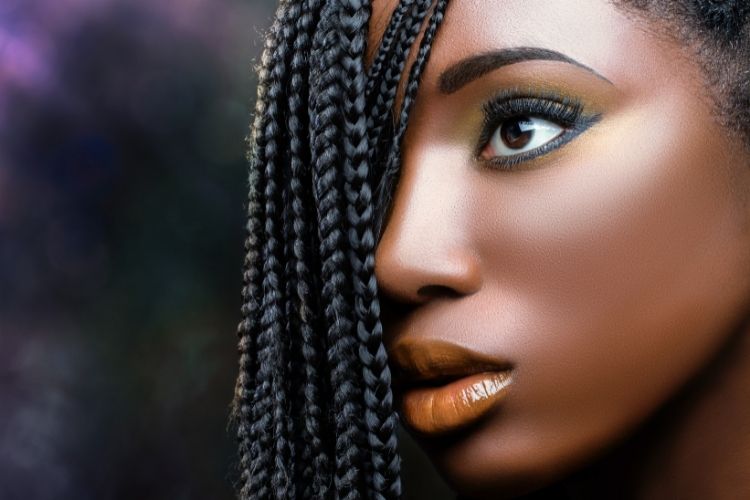
How Long Will My Braids Last?
Most black women start their dreadlocks when their hair is about 1/2 inch thick. However, once they reach this length, you should be able to wear them out in a protective style like box braids, a weave, or a wig.
At What Length Will My Braids Last?
The longer your hair is, the longer your braids will have to be. This also means that it takes more time and effort to get them done, so definitely plan ahead! Most stylists say that you should aim for at least 8 inches, but some will go as long as 10 inches.
More: REPAIRING CHLORINE DAMAGED HAIR: PROTECTION & PREVENTION TIPS FOR DRY OR GREEN HAIR FROM SWIMMING
What Type of Braids Is Easiest to Maintain?
If you’re looking for something that requires little maintenance, then a fishtail or flat twists might be your best option. They can last about 2-3 weeks with no styling required, and it will also help give you an idea of how much time it takes to do larger sets!
If you are not the patient type, however, then box braids are your safest bet because they don’t take all day to do – plus, stylists won’t make them too thick, so you’ll probably only have to get them done once a month or two. If this doesn’t sound attractive, but you still want something low-maintenance, then try mini twists or micro braids, which only take a day or two to do.
What Can I Do During My Braiding Appointment?
You can prepare for your stay by reading books, listening to music, browsing magazines, or watching old movies on your tablet. However, if you have kids, plan to have someone pick them up from school because your stylist will probably not want to keep an eye on them while they are working with your hair.
While the braids are being done, try sleeping if possible but bring a sweater just in case it gets chilly near the end of the session. Also, inform your stylist that you will want liquids and snacks at hand so that they know to expect this.
What Should I Bring to My Braiding Appointment?
It’s best to call your salon before the day of your appointment and ask them if they have any requirements. Most stylists prefer that you come with freshly washed hair, but some will also allow you to shampoo right before starting on your hair. If the salon doesn’t provide any snacks or drinks, then be sure that you bring your own water bottle and a healthy snack like nuts, seeds, or granola bars. They may not let you bring in electronics, chargers, or other unnecessary items, so check first!
What Happens if I Get My Braids Wet?
It’s a good idea not to get your hair wet for the first 2-to 3 days while it is still being installed. After that point, you can wear a scarf or use a shower cap when going under running water. When swimming, however, it’s best to take them out and redo them once you dry off. If you experience scalp irritation on any day of the braiding process, then immediately shampoo your hair using only cold water from the faucet.
How Long Does It Take to Do My Hair?
The amount of time it takes to braid your hair depends on the stylist’s experience and how many braids are in your head. For instance, flat twists or fishtails might take only 2 hours, but mini twists usually need at least two days to complete. According to most braiders, the average time per head is about 8-12 hours, so be sure to prepare yourself for a long stay at the salon!
What Is the Best Way to Care for My Braids Once I Get Them Done?
You’ll definitely want to avoid picking at or unraveling your braids, so it’s always best if you can find a trusted friend who will help you out. If not, then try threading floss through your braid and tying it onto your wrist. This way, there’s no possible way for your hands to get close to your hair.
Also, be sure that you remove all of the elastics before bedtime because they may end up pulling on your hair when you’re trying to sleep. For this reason, it’s okay to sleep on a satin pillowcase – plus, it helps keep frizz at bay.
What Should I Expect When Getting Braids for the First Time?
First-timers will probably experience some scalp irritation, but this is common for about 1-2 days. Make sure to drink lots of water and use apple cider vinegar to help your scalp heal properly. As time goes by, you’ll probably start to feel impatient because it usually takes 2-3 months before the braids start falling out on their own. There’s nothing much that can be done except wait patiently, but take comfort in knowing that once your braids are loose, they’ll never grow back together again.
How Do I Know Which Salon Is Best for Me?
Always try to find a salon with good reviews from past clients or one that has pictures of other clients’ hair online. These pictures will give you an idea of what kind of style you can expect from that particular hairstylist.
Also, speak to the stylist beforehand and let them know exactly how long it will take for you to get there if they lack a website. Most importantly, it’s best to find a salon where they have hair available upfront so that your braids don’t fall apart halfway through installation!
Final Words
Whew! I know that was a lot of information for such a simple concept, but braiding your hair is definitely not easy – especially if you want it to look nice. We wish you the best of luck in getting through this process and encourage you to come back for more tips on how to take care of your new style so it can last longer! Have fun gluing down those edges!
Table of Contents


